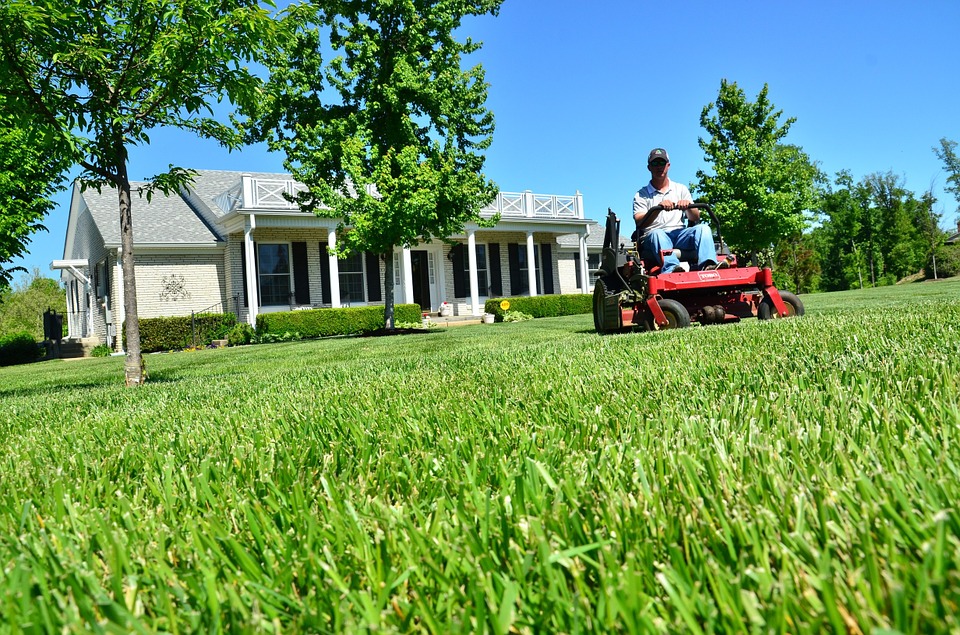Every homeowner who sports a lawn knows the importance of doing maintenance in spring. Far be it that this is the only thing to keep in mind, with regards to your green yard, in order to approach lawn mowing appropriately, you’ll want to set aside some time, so as to get everything right. The fact that spring is the season of plant life isn’t the only reason why looking after your lawn is supposed to take place then. Over the course of winter, soil pH is altered, compacted and conditions refreshing for weeds and disease are created. Here are a couple of tips for achieving a gorgeous lawn.

-
Clean and repair – It is here that the benefit of already having a well-maintained lawn springs in full blossom (pun intended). If you’ve already paid compliments to your lawn before the freezing, harsh winter has struck its mighty huff of cold air, all you need to do now is rake the ground, once it’s completely dry. Keep in mind, though, that you should address all the problem areas in a timely fashion, because these make extremely beneficial conditions for weeds and disease. This issue is perhaps best described with the example of uneven ground – while lower areas in your garden may cause poor drainage, resulting in water accumulation, thus drowning the plants, high spots are often exposed to more sun and often end up dehydrated; additionally, high spots are often accidentally scalped by the lawn mower.
-
Grass planting – The greatly dreaded season, that precedes the spring will often render parts of your lawn bare and brown. While this may seem like a huge headache, the blessing here is laid out in disguise – in this way, you know which parts of your yard to reseed. This being said, there are a couple more things to keep in mind, with regards to grass planting – if certain parts of your lawn are dead, you can rest assured that there is a reason for this. Fortunately, this issue can be overcome quite easily, by simply getting a soil test, which will basically tell you what extra nutrients, lacking in your cherished lawn, to apply.
-
Fertilizing – Fertilizers not only promote grass growth, but discourage weeds from turning up, in addition. Furthermore, a combination of the mentioned and herbicides can do you a world of wonder, when it comes to preventing the nasty parasites, the weeds, from turning up. You should keep in mind, however, that there is a number of factors to pay attention to here. Just as it can discourage the appearance of weeds, a fertilizer may actually damage the very grass you are trying to grow. The trick here is to use a slow-release nitrogen fertilizer, with amounts not surpassing the recommended 0.45 kilograms per 93 square meters.
-
Lawn mowing – When you think about lawn mowing, you probably picture of a carefree homeowner, running the lawnmower across their yard, whistling away a catchy tune. While none of this is necessarily a thing of your imagination, there is more to tending to your lawn with a mower than you might think. While cutting the grass short might save you time, by turning the frequency of required lawn mowing sessions a couple of notches down, this could turn out harmful for your plant life in the long run – mowing with the blades set at a low height removes nutrients stored in leaves of grass and leaves the soil exposed to sunlight – the weeds’ life force.
-
Equipment – Naturally, in order to keep your lawn well-groomed, you need to take care of your equipment. When the spring comes knocking, make sure that you disable the engine, for safety precautions. The most consumable piece of equipment is the spray hose, so be on the lookout for innovative, quality ones, at all times.
The most important thing, when it comes to lawn mowing is to perform it early in the spring, i.e. as soon as the soil has dried out. It is surely one of the things you can DIY, so roll up your sleeves and get to work. Following the mentioned tips, however, will make sure that your lawn leads a long, happy life.








